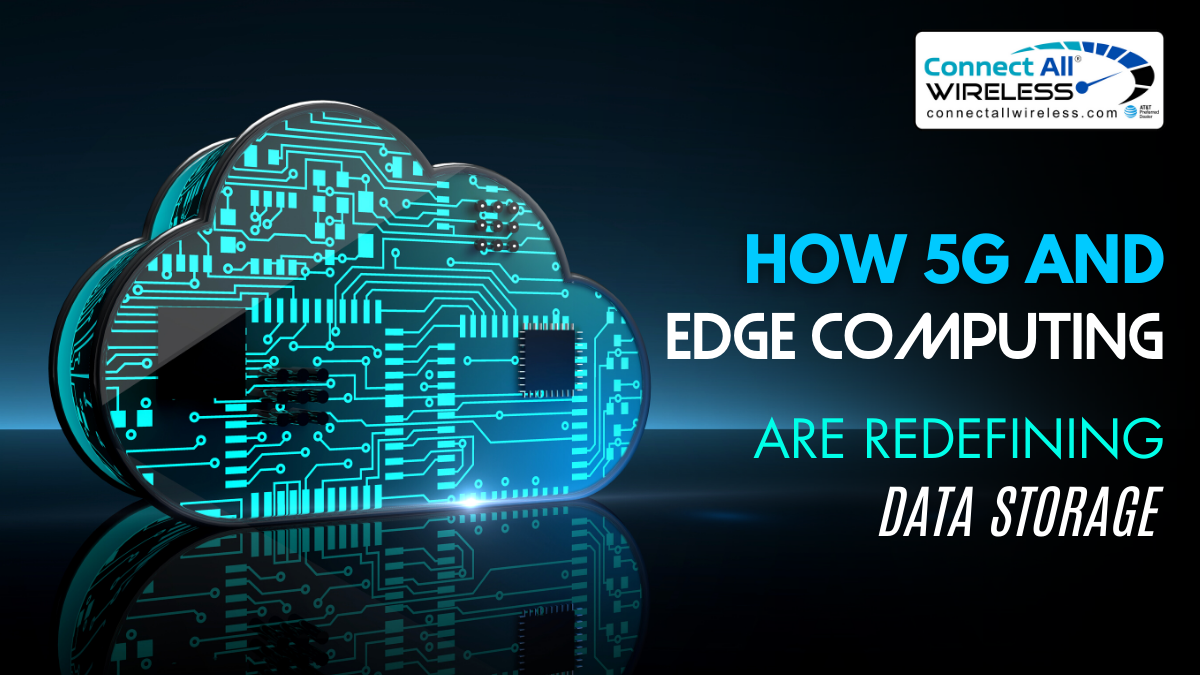How 5G and Edge Computing are Redefining Data Storage
January 26, 2024In the fast-paced world of technology, where innovation is the driving force, the integration of 5G and edge computing is reshaping the landscape of data storage. This dynamic duo is not only enhancing network capabilities but also redefining how we store, access, and manage data. In this blog post, we will delve into the profound impact of 5G and edge computing on data storage, exploring the benefits, challenges, and the transformative potential they hold for various industries.
The Evolution of Connectivity: 5G Unleashed
The advent of 5G has ushered in an era of unprecedented connectivity, promising faster speeds, lower latency, and enhanced reliability. This revolutionary leap in wireless technology is not just about faster internet on our smartphones; it is a catalyst for a myriad of transformative applications across industries.
- Speed and Low Latency: 5G’s remarkable speed and low latency are game-changers for data storage. With speeds up to 100 times faster than 4G and latency reduced to a mere fraction of a second, transferring and accessing data becomes almost instantaneous. This means that the traditional limitations of data storage, such as slow transfer speeds, are becoming obsolete.
- Massive Device Connectivity: 5G is designed to accommodate the massive influx of connected devices that characterize the Internet of Things (IoT). This surge in device connectivity generates an enormous volume of data. The traditional cloud-centric model struggles to handle this influx efficiently. Here, edge computing steps in to redefine the data storage paradigm.
Edge Computing: Bringing Storage Closer to the Source
While 5G sets the stage for rapid data transfer, edge computing takes the spotlight by bringing processing power closer to the data source. Unlike traditional cloud computing, where data is processed in centralized servers, edge computing distributes processing capabilities to the “edge” of the network, closer to where the data is generated.
- Reduced Latency and Bandwidth Usage: By processing data locally, edge computing significantly reduces latency. Critical applications, such as autonomous vehicles or real-time healthcare monitoring, benefit immensely from this reduced delay. Additionally, edge computing minimizes the need to transmit vast amounts of raw data to centralized servers, saving bandwidth and optimizing network resources.
- Enhanced Security and Privacy: With edge computing, sensitive data can be processed and stored locally, addressing concerns related to data privacy and security. This is particularly crucial in industries like healthcare and finance, where stringent regulations demand a high level of data protection.
The Symbiotic Relationship: 5G and Edge Computing
The true potential of this technological synergy emerges when 5G and edge computing join forces. Together, they create a seamless ecosystem that not only accelerates data transfer but also optimizes storage and processing resources.
- Distributed Cloud Architecture: The combination of 5G and edge computing gives rise to a distributed cloud architecture. This decentralized approach enables the efficient distribution of computing resources, ensuring that data is processed and stored in the most efficient location. This is particularly beneficial for applications requiring real-time processing, such as augmented reality (AR) and virtual reality (VR).
- Realizing the Potential of IoT: The integration of 5G and edge computing unlocks the full potential of the Internet of Things. From smart cities to industrial automation, the ability to process and store data at the edge facilitates a more responsive and intelligent IoT ecosystem. Devices can communicate seamlessly, making split-second decisions without relying on a distant cloud server.
Challenges and Considerations: Navigating the Path Forward
While the promises of 5G and edge computing are immense, it’s essential to acknowledge the challenges and considerations associated with this transformative journey.
- Infrastructure Investment: The deployment of 5G and edge computing requires significant infrastructure investment. Building the necessary networks, installing edge devices, and ensuring seamless connectivity demand substantial financial resources and careful planning.
- Data Management and Security: The distributed nature of edge computing introduces new challenges in data management and security. Organizations must implement robust data governance strategies to ensure compliance and protect against potential vulnerabilities.
Conclusion:
In summary, the fusion of 5G and Edge Computing is revolutionizing data storage, offering unparalleled speed, reduced latency, and distributed processing capabilities. This transformative synergy addresses the limitations of traditional models, ushering in a new era of connectivity and efficiency. As industries adapt to this dynamic landscape, the potential for innovation is boundless. For Michigan, the impact of this technological evolution is particularly significant, with the promise of advanced data storage capabilities enhancing the state’s digital infrastructure.
The advent of 5G Internet in Michigan stands as a beacon, signaling not just faster connections but a fundamental shift in how we store and manage data. Embracing this paradigm shift ensures that Michigan, along with the broader global community, is well-positioned to thrive in an era where data is not just stored but harnessed for unprecedented possibilities. The journey towards a more connected and efficient future has begun, and 5G Internet in Michigan is a key player in shaping this exciting narrative.


